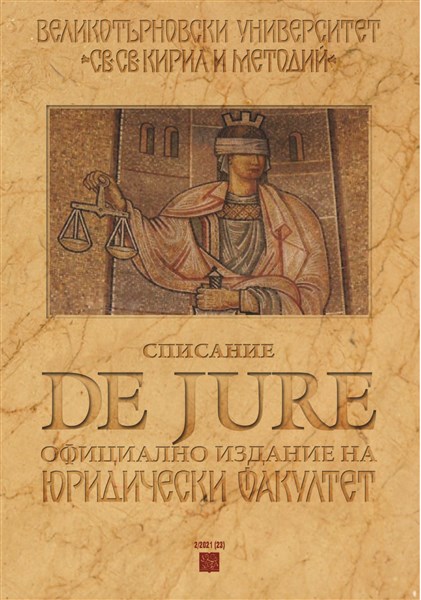Закрила на правата на жените и гарантиране на равенството на половете
Protecting Women’s Rights and Ensuring Gender Equality
Author(s): Alexandra ValchevaSubject(s): Law, Constitution, Jurisprudence, Criminal Law, Civil Law, Human Rights and Humanitarian Law, Sociology of Law, Court case
Published by: Великотърновски университет „Св. св. Кирил и Методий”
Keywords: Protection; women’s rights; gender equality; discrimination; international instruments; European Union
Summary/Abstract: In recent decades, the international community and the European Union have paid increasing attention to ensuring a sufficiently good level of protection of women’s rights. To achieve this level, international and European bodies and institutions should draw up and adopt various acts and instruments aimed at ensuring the fundamental principle of gender equality. For example, in European Union law, the principle of equality between men and women is reflected in Articles 2 and 3 (3) of the Treaty on European Union (TEU). These provisions explicitly state that the EU is based on certain values, including equality, and specifically promote equality between men and women. The Treaty on the Functioning of the European Union (TFEU) also provides for a separate provision which entrusts the Community with the task, in all its activities, of striving to eliminate inequalities and to promote equality between men and women (Article 8 of the TFEU). Next, Article 21 of the EU Charter of Fundamental Rights prohibits all forms of discrimination, including on the grounds of sex. In addition to the provisions of primary law, the EU seeks to ensure the principle under analysis by adopting strategies and programs of different scope and content. The Member States of the European Union, including the Republic of Bulgaria, also actively promote respect for the principle of gender equality. Explicit guarantees for its provision are contained in the legislation of the Member States, including at the constitutional level. Despite the measures taken on a global, European and national scale, the unequal treatment of women around the world persists. Most often, differences in the treatment of men and women are observed in the social sphere, employment and pay, healthcare, access to education, political, economic and social activities. The existence of these differences leads to the conclusion that it is necessary for the international community, the European Union and its Member States to adopt and implement even more targeted actions, policies and measures to ensure adequate protection of women’s rights.
Journal: De Jure
- Issue Year: 21/2021
- Issue No: 2
- Page Range: 245-252
- Page Count: 8
- Language: Bulgarian

